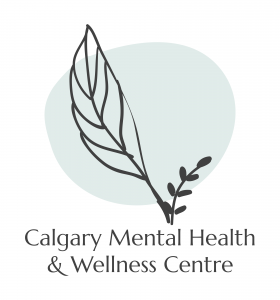Shame is one of those emotions that can feel heavy, isolating, and almost impossible to shake. It’s that inner voice that whispers, “I’m not good enough,” or “Something’s wrong with me.”
If you’ve ever felt that way—you’re not alone. And more importantly, there’s a way through it.
At Calgary Mental Health & Wellness Centre, we often use Dialectical Behavior Therapy (DBT) and self-compassion practices to help people understand, soften, and heal from shame. Together, they create a gentle but powerful road map from self-criticism toward genuine self-kindness.
Understanding Shame
Shame is different from guilt.
Guilt says, “I did something wrong.”
Shame says, “There’s something wrong with me.”
That small difference changes everything. Shame often keeps us stuck—it tells us we don’t deserve help, forgiveness, or connection. It can make us hide from others, shut down emotionally, or become overly harsh with ourselves in an attempt to “fix” what feels broken.
But here’s the truth: Shame isn’t a sign that you’re flawed. It’s a signal—a message that you’re yearning for acceptance, belonging, and safety.
What DBT Teaches Us About Shame
Dialectical Behavior Therapy helps us hold two truths at once:
I can accept myself as I am—and I can also work toward change.
That balance—acceptance and growth—is at the heart of healing from shame. DBT gives us tools to understand and regulate emotions without judgment, and to respond with awareness instead of reactivity.
Here are a few DBT-inspired steps that help shift shame into self-compassion:
🧭 Step 1: Name the Emotion
Start by gently acknowledging when shame shows up. Notice how it feels in your body—maybe a tight chest, sinking stomach, or urge to withdraw.
Labeling it (“This is shame”) creates a bit of space between you and the emotion. You can begin observing it rather than being consumed by it.
💬 Step 2: Practice Non-Judgmental Awareness
Instead of scolding yourself for feeling shame (“I shouldn’t feel this way”), try simply noticing:
“I’m feeling shame right now. That’s a painful emotion, and it makes sense I’d feel this way.”
This small shift turns judgment into curiosity—a key part of DBT’s mindfulness skills.
💗 Step 3: Respond With Compassion, Not Criticism
When your inner critic pipes up, try countering it with a compassionate voice.
You might say to yourself:
“I’m struggling right now, but I’m doing the best I can.”
“This feeling doesn’t define me.”
If it feels awkward at first, that’s okay. Self-compassion is a skill—it gets easier with practice.
🤝 Step 4: Connect Instead of Withdraw
Shame tells us to hide. Healing asks us to connect.
Reaching out to a trusted person, therapist, or support group helps remind your nervous system that you’re safe and not alone. In DBT, we call this opposite action—doing the healthy thing, even when it’s uncomfortable.
🌼 Step 5: Build a Compassionate Routine
Self-compassion isn’t a one-time event—it’s a daily practice.
Try simple habits like:
Writing a kind note to yourself each morning
Taking mindful breaks throughout your day
Speaking to yourself the way you’d speak to someone you love
Over time, these moments help rewire how you relate to yourself.
The Takeaway
Shame thrives in silence and judgment. Compassion grows in awareness and kindness.
When we use DBT skills to slow down, notice our emotions, and respond with care, we begin transforming that inner critic into an inner ally.
Healing from shame isn’t about becoming perfect—it’s about learning to see yourself as human, worthy, and capable of growth.
And that’s where self-compassion starts. 🌿
If you’re interested in learning more about DBT or self-compassion therapy, our team at Calgary Mental Health & Wellness Centre would love to help.
We offer evidence-based, supportive therapy for children, teens and adults looking to understand themselves and move toward greater emotional balance and peace.







